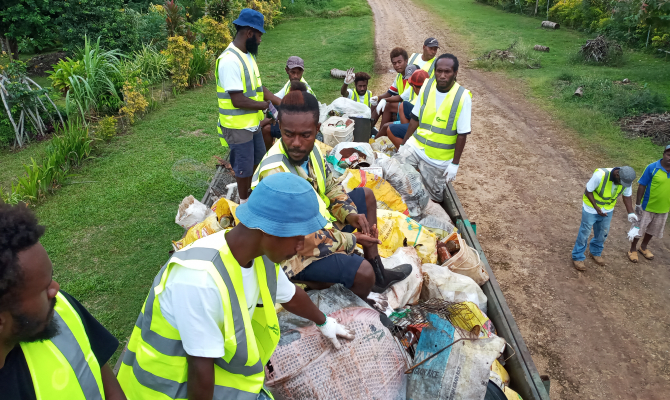News - May 19, 2021 Dealing with disaster waste this tropical cyclone season in the Pacific

Tropical cyclones, floods, and other natural disasters can generate large quantities of waste, including building debris, fallen trees, and hazardous waste. With five Pacific islands ranked in the top 15 countries world-wide with the highest disaster risk, addressing disaster waste is crucial.
The 2020 World Risk Report has ranked Vanuatu as the country with the world’s highest disaster risk, Tonga as second and the Solomon Islands, Papua New Guinea and Fiji ranked fifth, eighth and fifteenth respectively.
In an effort to help Pacific islands prepare for disaster waste management, three new resources – Asbestos Contaminated Material – Guide for disaster debris removal, Managing Disaster Waste: A guide for communities (Factsheet) and National Disaster Waste Management Plans: Benefits Of Having Disaster Waste Management Plans and Planning To Pacific Islands were published by the Secretariat of the Pacific Regional Environment Programme (SPREP) in 2020, through the Pacific-EU Waste Management Programme (PacWastePlus) programme, a 64-month project funded by the European Union (EU) and implemented by SPREP.
PacWastePlus addresses both the cost-effective and sustainable management of waste and pollution as well as broader impacts including human health and wellbeing, climate change, disaster management, biodiversity conservation and resource recovery. Priority waste streams include hazardous wastes (specifically asbestos, E-waste and healthcare waste), solid wastes (specifically recyclables, organic waste, disaster waste and bulky waste) and related aspects of wastewater.
“Now partway through our Tropical Cyclone season, we recognise and commend the efforts of our Pacific island governments in ensuring their communities are prepared and protected during this time,” said Mr Anthony Talouli, Acting Director of the Waste Management and Pollution Control Programme at SPREP.
“We are saddened that Members of our Pacific family have already been struck by Tropical Cyclones Yasa and Zazu before Christmas. It highlights the need for us all to build our Pacific resilience in the many different areas, including how to deal with waste created by disasters.”
In the past, Pacific islands have recorded overwhelming amounts of disaster waste generated during natural hazards, which experts say can be as much as ten times the average waste generated under routine conditions.
Asbestos Contaminated Material – Guide for disaster debris removal and Managing Disaster Waste: A guide for communities (Factsheet) provide guidance for the safe handling and management of waste generated from natural disasters, such as asbestos-contaminated material.
“These are just one initiative of a range of activities we are working with our SPREP Members on and we continue to work with partners to support our Members,” said Mr Talouli.
“There are a wide range of devastating impacts caused by disasters for our Pacific islands, we are appreciative of the opportunity to work with you all to build our Pacific resilience. We are hopeful our work together to address disaster waste will result in positive outcomes for our region.”
Also, in process of completion are the draft Regional Disaster Waste Management Guideline that was presented to the Twenty-Ninth SPREP Annual Meeting in 2019 supported by the Japan International Cooperation Agency through the JPRISM II Project. They will be launched at the Third Clean Pacific Roundtable this year.
Photo credit: Michael Taiki, PacWastePlus Regional Project Officer-Vanuatu.

